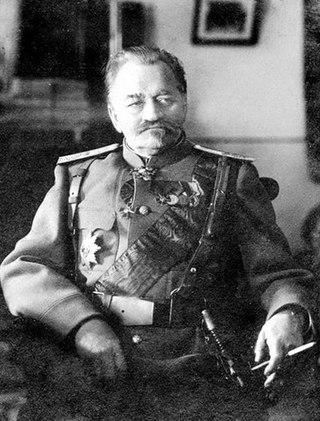Related Research Articles
In chemistry, a structural isomer of a compound is another compound whose molecule has the same number of atoms of each element, but with logically distinct bonds between them. The term metamer was formerly used for the same concept.
TCP may refer to:

Cork taint is a broad term referring to an off-odor and off-flavor wine fault arising from the presence of 2,4,6-trichloroanisole (TCA), a chemical compound that represents one of the strongest off-flavors, and one "generated naturally in foods/beverages", in particular wines, that considerably reduces the quality of these products.

2,4,6-Trichloroanisole (TCA) is an organic compound with the formula CH3OC6H2Cl3. It is the symmetric isomer of trichloroanisole. It is a colorless solid.

Triazines are a class of nitrogen-containing heterocycles. The parent molecules' molecular formula is C3H3N3. They exist in three isomeric forms, 1,3,5-triazines being common.

Chlorogenic acid (CGA) is the ester of caffeic acid and (−)-quinic acid, functioning as an intermediate in lignin biosynthesis. The term chlorogenic acids refers to a related polyphenol family of esters, including hydroxycinnamic acids with quinic acid.

Aleksandr Pavlovich Dianin was a Russian chemist from Saint Petersburg. He carried out studies on phenols and discovered a phenol derivative now known as bisphenol A and the accordingly named Dianin's compound. He was married to the adopted daughter of fellow chemist Alexander Borodin. In 1887, Dianin succeeded his father-in-law as chair of the Chemistry Department at the Imperial Medical-Surgical Academy in St. Petersburg.
Xylenols are organic compounds with the formula (CH3)2C6H3OH. They are volatile colorless solids or oily liquids. They are derivatives of phenol with two methyl groups at various positions relative to the hydroxyl group. Six isomers exist, of which 2,6-xylenol with both methyl groups in an ortho position with respect to the hydroxyl group is the most important. The name xylenol is a portmanteau of the words xylene and phenol.

Phenoxy herbicides are two families of chemicals that have been developed as commercially important herbicides, widely used in agriculture. They share the part structure of phenoxyacetic acid.

Diphenyl oxalate is a solid whose oxidation products are responsible for the chemiluminescence in a glowstick. This chemical is the double ester of phenol with oxalic acid. Upon reaction with hydrogen peroxide, 1,2-dioxetanedione is formed, along with release of the two phenols. The dioxetanedione then reacts with a dye molecule, decomposing to form carbon dioxide and leaving the dye in an excited state. As the dye relaxes back to its unexcited state, it releases a photon of visible light.
A chlorophenol is any organochloride of phenol that contains one or more covalently bonded chlorine atoms. There are five basic types of chlorophenols and 19 different chlorophenols in total when positional isomerism is taken into account. Chlorophenols are produced by electrophilic halogenation of phenol with chlorine.

2,4,6-Trichlorophenol, also known as TCP, phenaclor, Dowicide 2S, Dowcide 2S, omal, is a chlorinated phenol that has been used as a fungicide, herbicide, insecticide, antiseptic, defoliant, and glue preservative. It is a clear to yellowish crystalline solid with a strong, phenolic odor. It decomposes on heating to produce toxic and corrosive fumes including hydrogen chloride and chlorine.
Dichlorophenols (DCPs) are any of several chemical compounds which are derivatives of phenol containing two chlorine atoms. There are six isomers:

In chemistry, isomers are molecules or polyatomic ions with identical molecular formula – that is, the same number of atoms of each element – but distinct arrangements of atoms in space. Isomerism refers to the existence or possibility of isomers.
An iodophenol is any organoiodide of phenol that contains one or more covalently bonded iodine atoms. There are five basic types of iodophenols and 19 different iodophenols in total when positional isomerism is taken into account. Iodophenols are produced by electrophilic halogenation of phenol with iodine.
Adsorbable organic halides (AOX) is a measure of the organic halogen load at a sampling site such as soil from a land fill, water, or sewage waste. The procedure measures chlorine, bromine, and iodine as equivalent halogens, but does not measure fluorine levels in the sample.

2,4,6-Tri-tert-butylphenol (2,4,6-TTBP) is a phenol symmetrically substituted with three tert-butyl groups and thus strongly sterically hindered. 2,4,6-TTBP is a readily oxidizable aromatic compound and a weak acid. It oxidizes to give the deep-blue 2,4,6-tri-tert-butylphenoxy radical. 2,4,6-TTBP is related to 2,6-di-tert-butylphenol, which is widely used as an antioxidant in industrial applications. These compounds are colorless solids.
A bromophenol is an organic compound consisting of hydroxyl groups and bromine atoms bonded to a benzene ring. They may be viewed as hydroxyl derivatives of bromobenzene, or as brominated derivatives of phenol. There are five basic types of bromophenols and 19 different bromophenols in total when positional isomerism is taken into account. Bromophenols are produced by electrophilic halogenation of phenol with bromine.

Ohio River Park is a Superfund Site located in Neville Island, Pennsylvania. Between the 1920s-1970s, the Site was used for municipal waste, pesticide manufacturing, coke sludge disposal, cement manufacturing disposal, and pesticide waste. In 1977, Neville Land Company donated the Site to Allegheny County who started developing the Site as a community park. In 1979, Allegheny County found various hazardous contaminants on the Site. On August 30, 1990, the Site was determined to be a Superfund Site due to VOCs, SVOCs, inorganics, and pesticides being present in the surface soil, subsurface soil, surface water, river sediment, and groundwater. Soil remediation began in February 1998 and ended in September 1999. Today, Ohio River Park has the Robert Morris University Island Sports Center and Coraopolis Bridge on top of it. Additionally, benzene continues to be monitored because it is still present in the Site's groundwater.
A tetrachlorophenol is any organochloride of phenol that contains four covalently bonded chlorine atoms. Tetrachlorophenols are produced by electrophilic halogenation of phenol with chlorine. Different isomers of tetrachlorophenol exist according to which ring positions on the phenol contain chlorine atoms.
References
- ↑ Ebel, Eileen; Bell, Jane; Fries, Arthur; Kasey, Carl; Berkebile, J. M. (1947). "Preparation of 2,4-D(2,4-dichlorophenoxyacetic acid) from phenol and monochloracetic acid". J. Chem. Educ. 24 (9): 449. doi:10.1021/ed024p449 . Retrieved 13 July 2020.